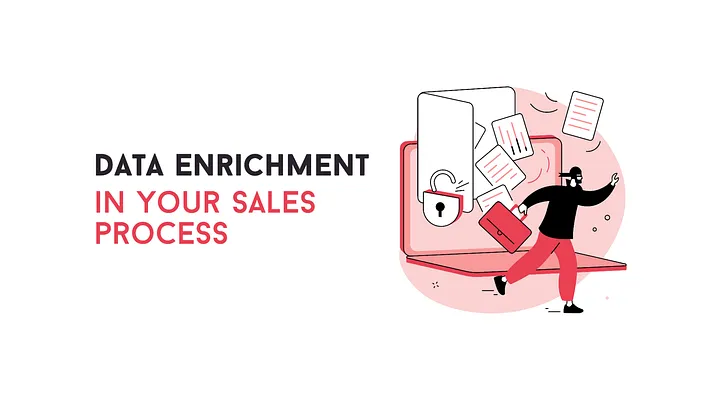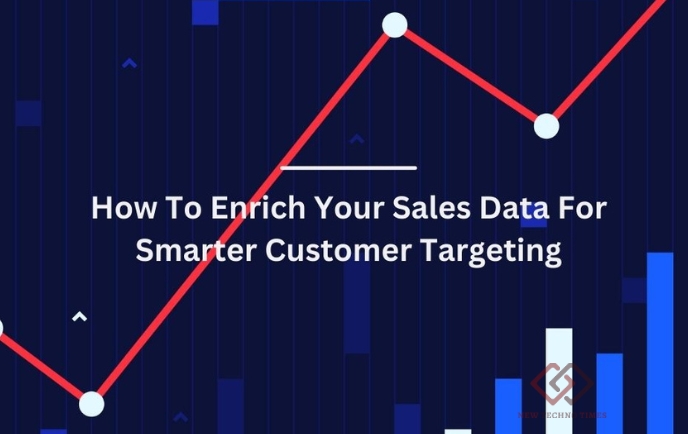Imagine sending out newsletters for your new marketing campaign with exclusive discounts and insightful tips but getting an underwhelming response. The open rates are low, click-through rates are negligible, many emails bounced, and your sales remained stagnant. How would you resolve such issues and ensure that your sales targets are met?

A US-based water technology company faced a similar challenge where despite heavy investments, their email marketing campaigns were not yielding desired results. They were struggling to reach out to prospective customers as their CRM data was outdated and incomplete.
On detecting the problem, the company chose to cleanse and append its sales data for smarter customer targeting. The enriched data facilitated a remarkable 39% increase in their email delivery rate, while their overall sales surged by an impressive 52%.
Sales data enrichment thus proves to be a crucial process that can help businesses understand and serve their target customers for higher sales. With a structured data enrichment strategy, businesses can enjoy repeat purchases, higher referrals, and long-term loyalty from their customers.
They can also outperform their competitors by delivering more precise and personalized experiences.
If incomplete and outdated data is hampering your customer-targeting strategies as well, here is how to enrich your sales data efficiently:
Conduct an analysis of your current data and identify the missing gaps
To enrich customer data, you must examine the current data fields and identify where the need for enrichment arises.
- Analyze details about one-time and recurring buyers, potential clients, and customer profiles with contact details, geographic location, and demographics.
- Uncover patterns and trends like seasonal sales fluctuations, the channels most purchases come from (online or offline), and peaks and valleys in buyer’s behavior.
- Detects gaps in customer profiles like incomplete contact information or missing purchase histories. Check for inconsistencies in sales data like transactions with missing product information, product SKU numbers, or payment methods.
- Analyze the data quality and detect errors or inconsistencies, such as duplicate entries in customer databases. Check for mismatches in your sales record compared to inventory levels.
- Document all the missing gaps, incomplete information, and quality issues for accurate and timely sales data enrichment.
Also Read: The Future of Automation: Bridging the Gap Between AI and RPA
Search and collect the missing information
After errors and incomplete fields are detected, the next step is to find and gather relevant information to append these fields.
- Explore your internal data sources and seek information from departments like customer service, sales, finance, or marketing.
- Target your customers through emails, surveys, and phone calls, to gather information about their buying preferences, thoughts on competitors, and incomplete contact information.
- To gather relevant information, leverage external sources like industry reports, online directories, social media platforms, or market research studies. You can also conduct market research with specific focus groups to complete the existing data and uncover new trends.
Cleanse and verify the gathered information
Before enriching all the relevant fields, an important step is to cleanse and verify the collected sales data for smarter customer targeting.
- Identify and correct errors like misspellings or incorrect formatting of addresses, names, or email addresses.
- Check for the accuracy and completeness of the information you have collected and remove any information irrelevant to the enrichment process.
- Confirm the credibility of the third-party sources from where the data is gathered.
- Take constant updates from relevant stakeholders involved in the sales data gathering process to resolve any conflicts or discrepancies about the newly gathered information.
Enrich your database with additional information
The next step is to append the gaps in existing data fields with newly gathered information.
- Update the existing customer profiles with missing information in your CRM system, such as demographic details, contact numbers, email addresses, etc.
- Update any missing purchase information like date and time of buying, shipping information, payment methods, or quantities purchased.
- Also, attribute your marketing efforts by adding information about the most popular sales channels like mobile apps, websites, or other platforms. Append any missing data related to sources that generate the highest leads, such as email marketing campaigns, social media ads, PPC ads, or referral programs.
Also Read: Best Free Disk Partition Software for Windows 11/10/8/7
On a concluding note
Many businesses opt for automation or AI tools to better utilize sales data for smarter customer targeting, due to the ability of AI to streamline processes.
However, these tools often lack crucial contextual understanding and subject matter expertise. Additionally, they can expose data to risks, such as breaches and unauthorized usage.
A more reliable approach is to opt for a service provider that combines human expertise with technology. These providers enrich data while adhering to industry standards and robust security protocols.
When you outsource data enrichment services, professionals prioritize data quality and security. They hold compliance certifications and sign service security agreements to safeguard data.
The professionals stay abreast with best practices and the latest technologies to proactively protect your data. Experts, improve your overall data quality while keeping it secure to design better marketing campaigns, drive higher sales, and generate more revenue.
FAQs
Is data enrichment and data appending the same thing?
Yes, the two terms are interchangeably used to explain the process of enhancing the existing records in a database by adding missing or incomplete information.
How do I ensure the accuracy and reliability of my sales data?
You can conduct regular quality management practices like data cleansing, validation, and standardization. Conduct regular audits and establish data governance policies to ensure your sales data meets quality standards.
How frequently do I have to enrich and update my sales data?
The frequency of sales data enrichment depends on many factors, such as changing customer behavior patterns, current market conditions, emerging industry trends, and rate of data fluctuation. An ideal practice should be to enrich data regularly, whether weekly, monthly, or quarterly.
How do I use the enriched sales data for smart customer targeting?
You can use the enriched data to design custom marketing messages, optimize pricing strategies, and deliver tailored recommendations. The new information about customer behavior and buying preferences also helps uncover new outreach and expansion opportunities.
How do I track the effectiveness of my sales data enrichment efforts?
You can assess the effectiveness of your efforts by comparing sales metrics before and after implementing the data enrichment strategies. These metrics involve tracking KPIs like customer acquisition costs, lifetime value, conversion rates, and ROI.

Ella Wilson is a Sr. Business Consultant and Content Strategist at SunTec India, a leading multi-process IT outsourcing company. She has been associated with the company for more than six years and holds an overall experience of ten years in the industry. Wilson is keen on helping businesses make the most out of their data assets and improve their business processes.
She has vast experience writing about data entry, processing, management, and other solutions. As an avid reader and technology enthusiast, Ella pens down her thoughts, incorporating all her experience and knowledge to help budding enterprises solve their challenges and pave their path to success.
Besides writing about data solutions, she is also passionate about writing articles revolving around technology, eCommerce, digital publishing, digital marketing, and more.

